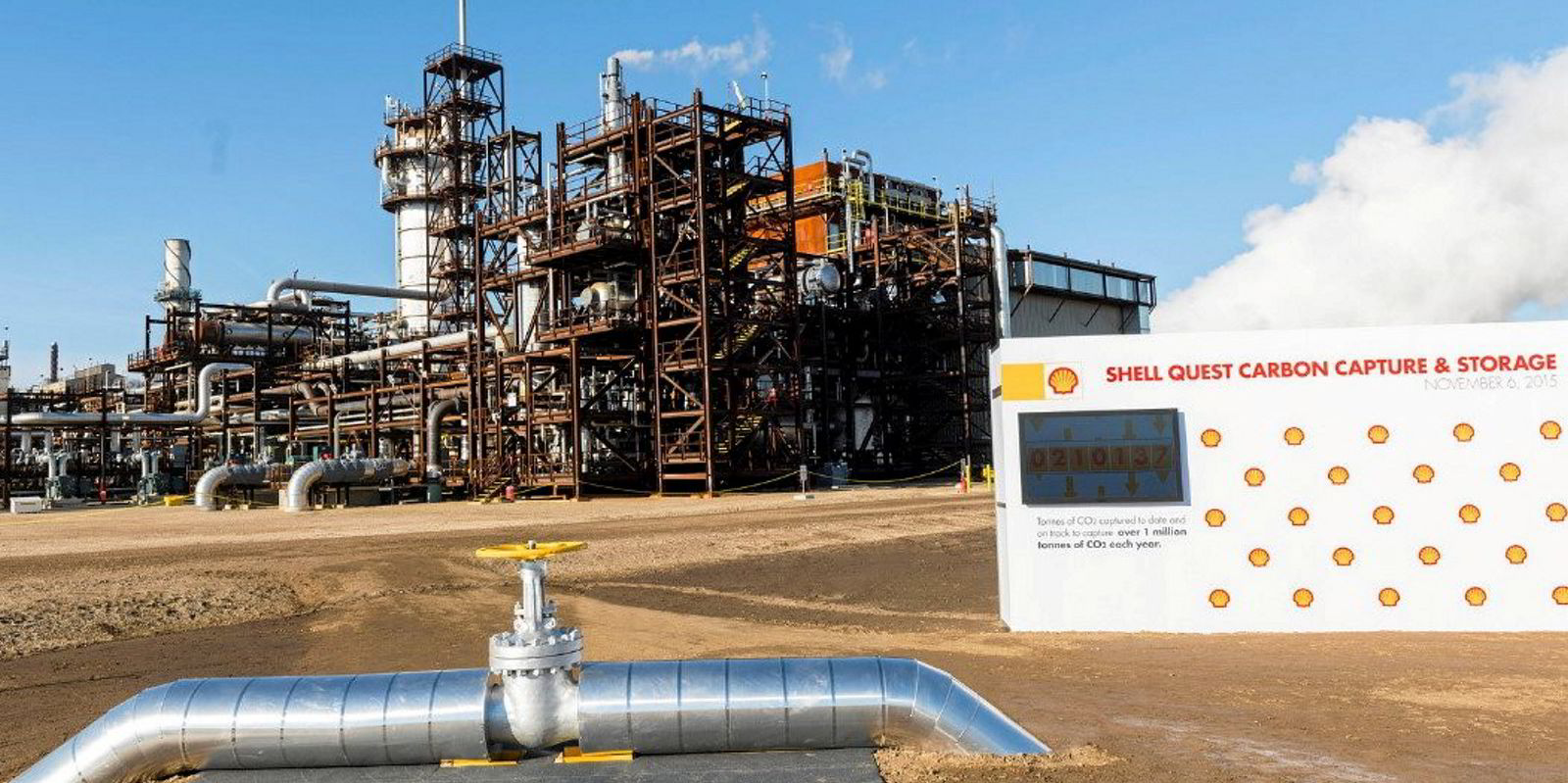
Shell's Quest CCS plant near Edmonton, Canada, which produces 900 tonnes of blue hydrogen per day.
Climate impact of blue hydrogen would be similar to green H2 if emissions were minimised: study
Reducing natural-gas leaks in the supply chain and increasing carbon capture rates would allow blue H2 to be a 'bridging technology', says global team of academics
Blue hydrogen — produced from natural gas with carbon capture and storage — can have a similar climate impact to renewable hydrogen, if two key requirements are met, according to a yet-to-be-peer-reviewed scientific study written by 16 researchers from around the world.
“If methane emissions from natural gas supply are low and CO2 capture rates high, blue hydrogen is comparable with green hydrogen in terms of impacts on climate change,” says the report, entitled On the climate impacts of blue hydrogen production.
The study — written by academics based in the UK, the US, Canada, Swizerland, Germany, Italy and the Netherlands — looks at what could feasibly achieved in terms of greenhouse gas (GHG) emissions from blue hydrogen production, in contrast to the recent controversial study that largely used historic data to claim that blue H2 is worse than natural gas for the climate.
“Our LCA [lifecycle assessment] of hydrogen production with CCS shows that the term 'blue hydrogen” as such can only be taken as synonym for ‘low-carbon’ hydrogen if two key requirements are met,” states the report, which has appeared on the pre-publication academic website ChemRxiv.
“First, natural gas supply must be associated with low GHG emissions, which means that natural gas leaks and methane emissions along the entire supply chain, including extraction, storage, and transport, must be minimized.
“Second, [methane] reforming technology with high CO2 capture rates must be employed.”
The report states that current carbon capture technology can “allow removal rates at the hydrogen production plant of above 90%”, pointing out that capture rates of “close to 100% are technically feasible, slightly decreasing energy efficiencies and increasing costs, but have yet to be demonstrated at scale”.
“Our main conclusion is that, if the above requirements are met, blue hydrogen can be close to green hydrogen in terms of impacts on climate change and can thus play an important and complementary role in the transformation towards net-zero economies.
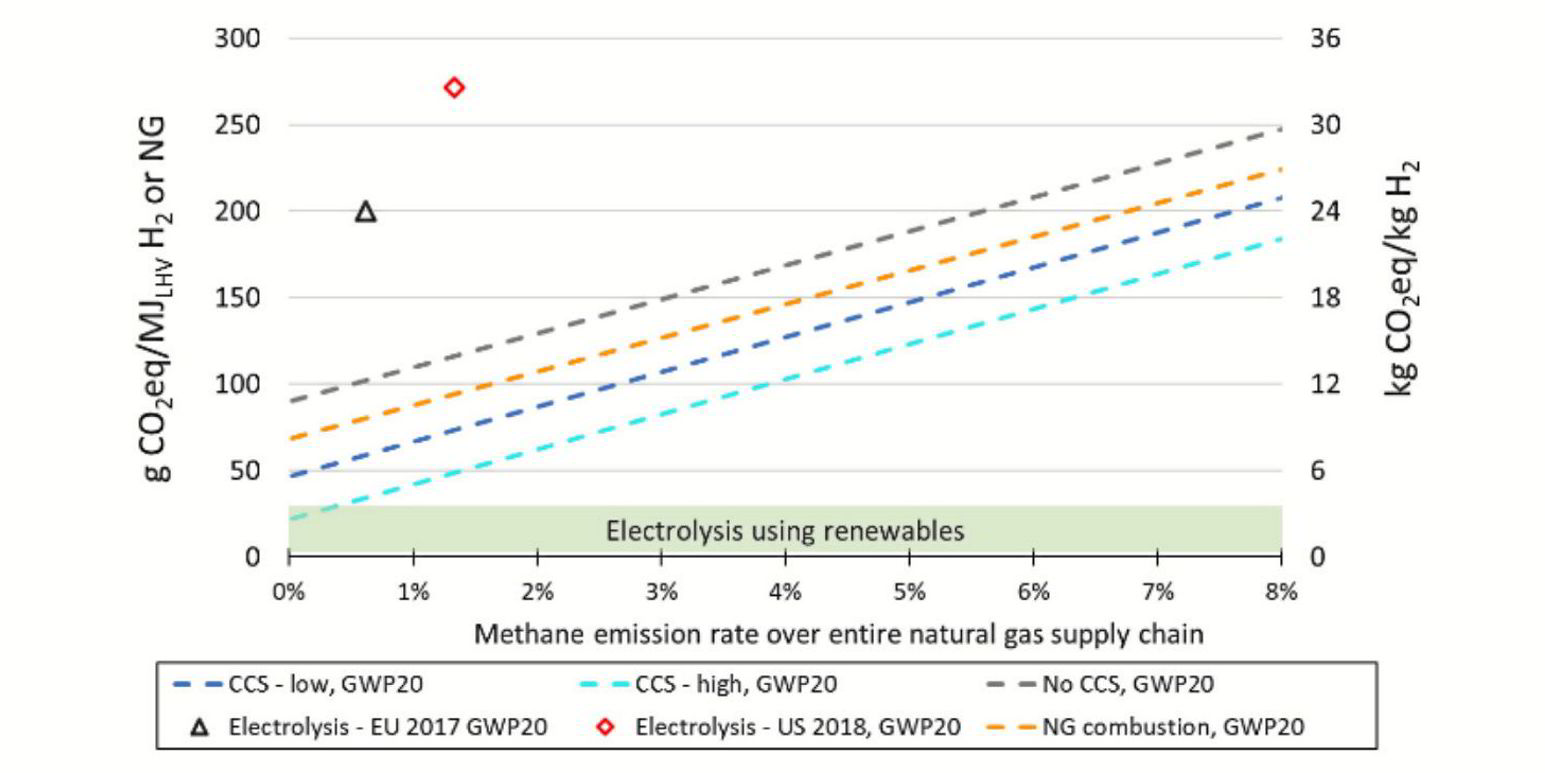
“In order to be competitive with green hydrogen in terms of climate impacts over the long-term, blue hydrogen should exhibit a life cycle GHG footprint of not more than 2-4 kg CO2 [equivalent per] kg. This is only possible with high CO2 removal rates [of 93%, using autothermal reforming] and methane emission rates below about 1% (GWP100) or 0.3% (GWP20).” [see panel below for explanation of GWP]
Part of this assessment is based on the assumption that “no single hydrogen production technology (including electrolysis with renewables) is completely net-zero in terms of GHG emissions over its life cycle and will therefore need additional GHG removal from the atmosphere to comply with strict net-zero targets.”
Presumably, this is a reference to greenhouse gases emitted in the process of producing, transporting and installing solar panels, wind turbines and batteries — although this is not explicitly addressed in the study.
The report states that one shale gas production region in the US has achieved methane emission rates “as low as 0.3-0.4%”, while in Norway, the UK and the Netherlands, “natural gas supply chains have emission rates typically below 0.5%”.
It adds that gas exporters such as Russia, Algeria and Libya have methane emission rates “around or significantly higher than 2%”.
The authors do concede, however, that “there is a very large uncertainty on these emissions, which needs to be urgently addressed by improved measurement, reporting, and disclosure”.
While the report states that “green hydrogen should be preferred [to blue]”, it explains: “Given the short- to medium-term capacity of green hydrogen, blue hydrogen can play a role as a bridging technology supporting the uptake of hydrogen infrastructure and hydrogen end-use transformation.”(Copyright)
GWP20 V GWP100
GWP100 and GWP20 refer to the global warming potential (ie, climate impact] over a 100-year-period and over a 20-year period. Methane is 84-87 times more powerful a greenhouse gas than carbon dioxide over 20 years, but only 28-36 times stronger over the course of a century.
Therefore, dramatically different conclusions can be reached depending on which GWP scenario is used.

'Incorrect conclusions': Equinor leads backlash against damning blue hydrogen studyRead more

Blue hydrogen backlash 'has ring of fracking row': professor defends damning studyRead more
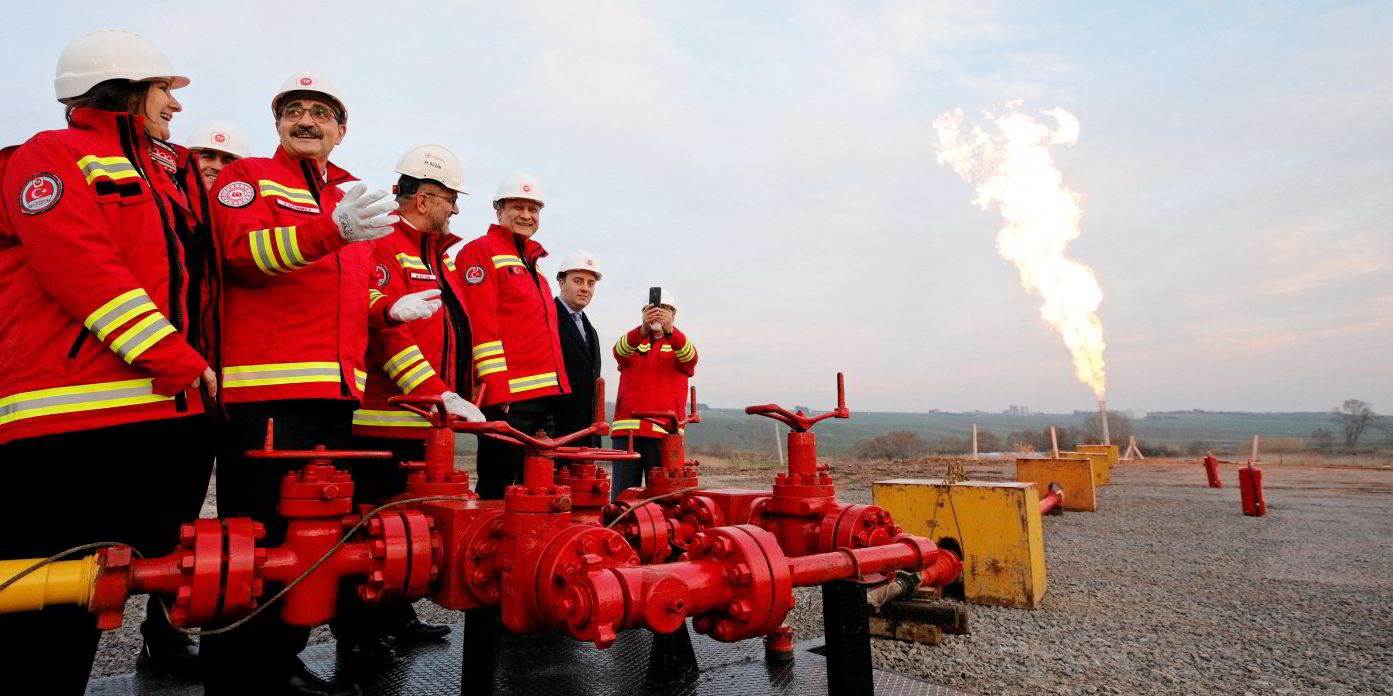
Upstream emissions risk 'killing the concept of blue hydrogen', says Equinor vice-presidentRead more

Liebreich: 'Blue hydrogen will be needed because green H2 alone will not be able to meet demand'Read more
'We need both blue and green hydrogen. It's all hands on deck': DNV's Eriksen
Energy Transition
2 September 2021 7:29 GMT
'Betraying future generations': chair of UK hydrogen group quits over blue H2 support
Energy Transition
19 August 2021 9:56 GMT
Green, blue and pink: Bipartisan US infrastructure bill allocates $9.5bn to push down the costs of clean hydrogen
Energy Transition
3 August 2021 15:35 GMT
Liebreich: Capturing only 90% of CO2 emissions in blue hydrogen production ‘ain’t good enough’
Energy Transition
2 July 2021 12:09 GMT
'Carbon pricing rules are needed for green and blue H2 to be cost-competitive': DNV
Energy Transition
1 July 2021 11:48 GMT
20 September 2021 15:12 GMT UPDATED 20 September 2021 15:12 GMT
By Leigh Collins

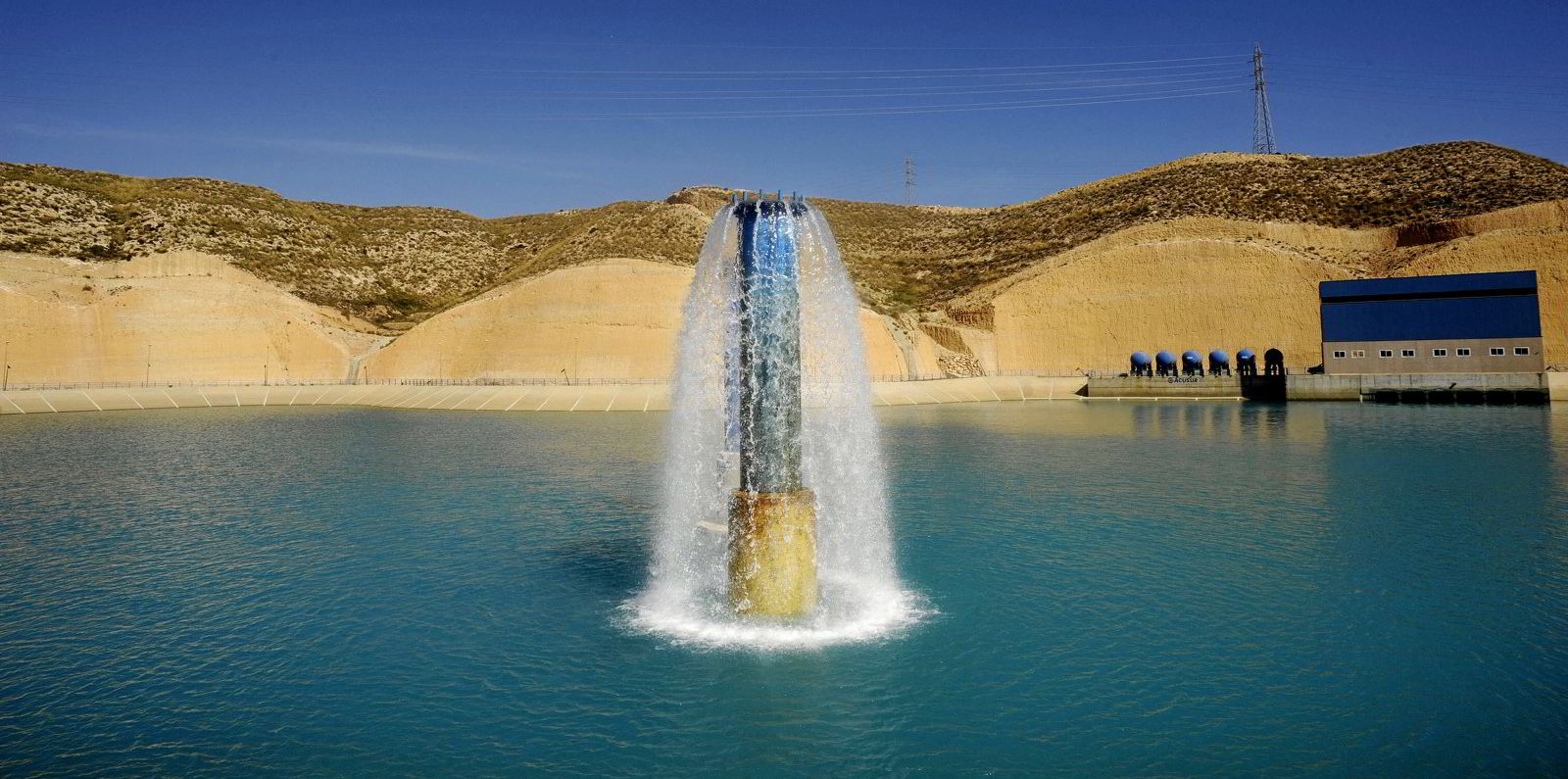
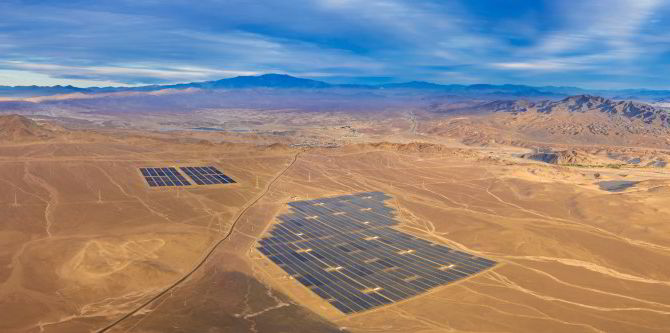
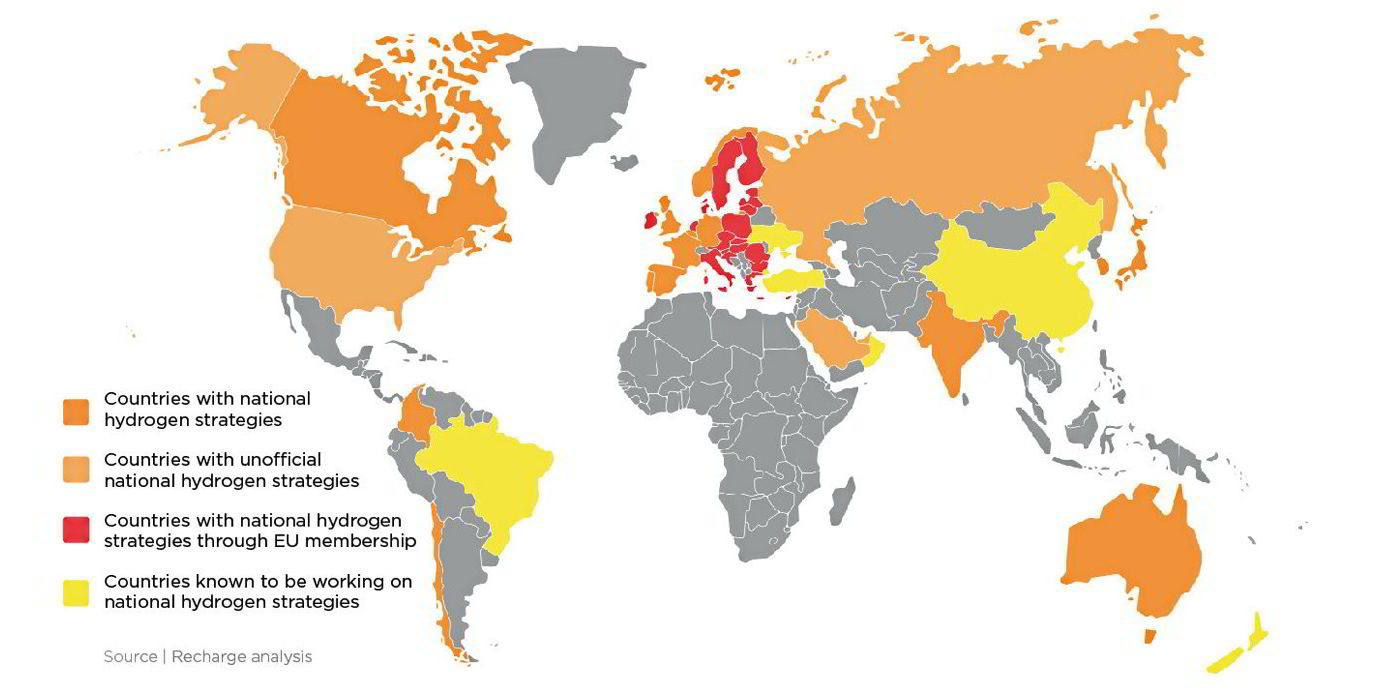




















 I
I




